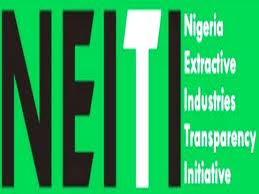
The Nigeria Extractive Industries Transparency Initiative, NEITI,in its latest report has expressed concern over the volatility in the monthly revenue allocation to Federal, States and Local Government Areas saying it is frustrating growth and development of the Nigerian economy. NEITI, in its Quarterly Review titled ‘Analysis of third quarter 2017 Federation Account Allocation Committee, FAAC, Disbursements and Mid-year Budget Implementation,’ said this volatility in revenue allocation had brought to the fore the need to diversify government revenue sources.
The report said that disbursements to the federal government in 2017 were highest in July) and lowest in May, at N286.65 billion and N163.90 billion, respectively, representing a difference of N122.75 billion, and also implying a 74.8 per cent difference between the months with the highest and lowest disbursements. It noted that states received the highest and lowest disbursements in September and January at N215.78 billion and N141.12 billion, respectively, a difference of N74.66 billion or 52.9 per cent, while local governments received the highest disbursement in July, which was N134.93 billion and the lowest disbursement in January, which was N85.40 billion, representing a difference of N49.52 billion or 57.9 per cent.
The report further said that the nine months followed a rise and fall pattern, except between May and July when two consecutive months of increases were recorded. NEITI said, “These figures suggest a high degree of volatility in government revenue across all three tiers of government. Analysis show that disbursements to the federal, states and local governments have risen and fallen in alternate months throughout the year. This makes economic planning and execution of capital projects difficult, and further buttresses the need for diversified sources of government revenue to limit volatility and ensure more stable and predictable revenue streams.”
The report noted that total FAAC disbursements in the third quarter of 2017 was N1.757 trillion which was 1.09 per cent higher than the N1.738 trillion disbursed in the third quarter of 2016, adding, however, that this disbursement was 6.88 per cent lower than the N1.887 trillion shared in the third quarter of 2015.
It said that for third quarter 2017, the federal government received the largest disbursement of N752.79 billion, followed by states which received N586.58 billion, while local governments received N363.98 billion. “Actual revenue for the first half of the year fell short of projections. Actual oil revenue was N1.587 trillion, representing a shortfall of N1.079 trillion, implying a 40.4 per cent underperformance. Non-oil revenue fared slightly worse, as only 41.6 per cent of the projected revenue was realized. Actual non-oil revenue totaled N1.125 trillion, indicating a shortfall of N1.575 trillion. Total actual oil revenue, though projected to be slightly lower than non-oil revenues, was 41 per cent higher than total actual non-oil revenue,” the report noted.
NEITI further bemoaned the fact that the solid minerals sector had failed to contribute to Nigeria’s earnings in 2017 despite the abundance of solid minerals deposits across the country.
The report disclosed that the improved performance recorded in 2017 was attributed to the increase in economic activities, expansion in the tax base and the improvement in performance of revenue collecting agencies.
Interestingly, the NEITI noted that there was no revenue recorded from solid minerals and dividends from investments funded by FAAC.
It said, “This belies the low production in the midst of abundant solid minerals the country possesses. Coal production has only been about 0.006 per cent of proven reserves while about 1.2 per cent of the lead/zinc reserves has been mined. Limestone production has been about 1.93 per cent of proven reserves while gold production has been about 14 per cent of proved reserves. “It is hoped that the implementation of the Solid Minerals Road Map as a key element of the Economic Recovery and Growth Plan (ERGP) will ensure greater revenue from solid minerals in the future.”

